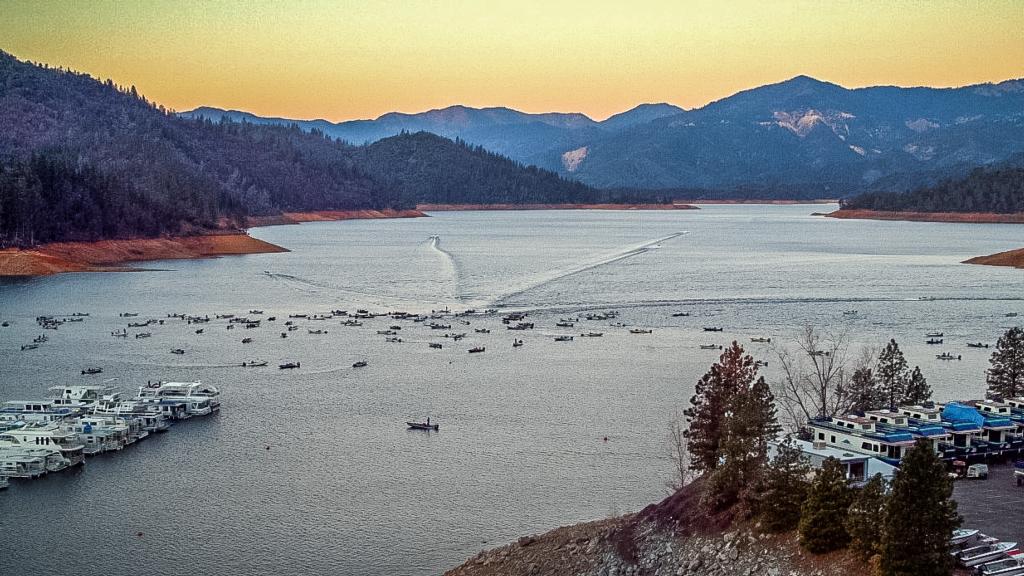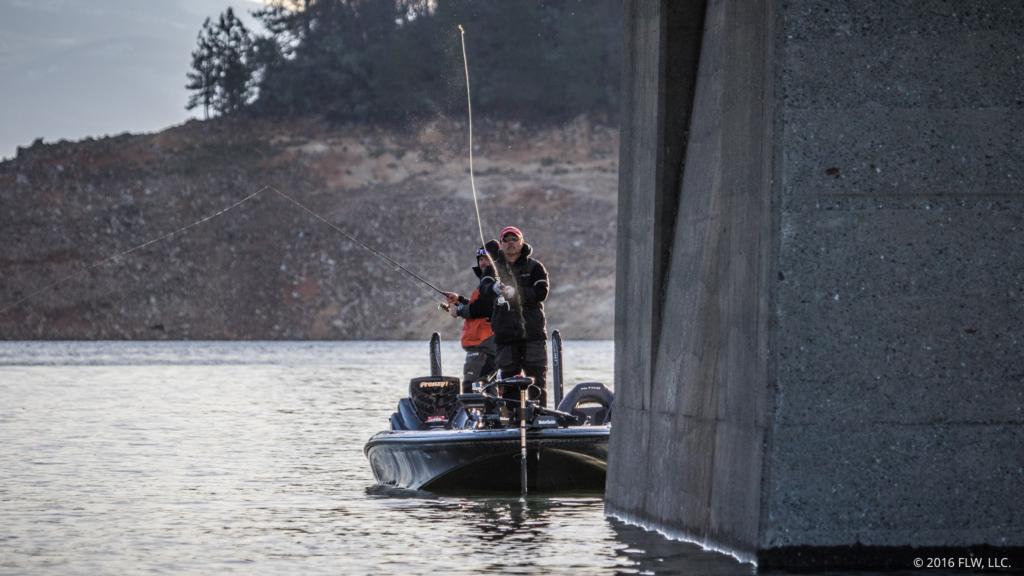Scenic Views and Spotted Bass on Tap for Western Division Opener

As of January 20, this event has been postponed.
The 2021 Toyota Series Western Division kicks off the season in northern California on beautiful Lake Shasta January 28-30. So, get ready for fat spotted bass and some of the best on-the-water views in the country.
Tournament Details
Toyota Series Western Division
Redding, California
January 28-30, 2021

How the Fishery Sets Up
Situated on the Sacramento River in northern California, Lake Shasta is roughly 30,000 acres of some of the most scenic water in the country. Seated below Mount Shasta of the snow-capped Cascade Range, Shasta was built in the ’40s and is home to both cold-water and warm-water fish. For tournament anglers, the star of the lake isn’t the trout fishery (mostly supported by stocking), or the incredible scenery, but the plentiful spotted bass in the mountain impoundment.
Shasta fluctuates tremendously depending on the rain and snowfall in the area, and at the moment has been on a falling trend, but recent rains at the time of writing this could change that. Because the lake fluctuates so much, Shasta offers various rocky bluffs, cuts, points and islands for structure, but is basically devoid of vegetation. The lake usually has a green tint to the water with clarity of about 4 feet in many places, but currently, the lake is cleaner than usual and areas can be found with up to 15 feet of visibility.

What to Expect
It’s been a few years since the Toyota Series rolled out to Shasta, though late January to early February tends to be the timeframe when previous tournaments have taken place. The thing with Shasta in the past is that we’ve known what to expect in terms of presentations and fish location, but this time it may be a bit different. At least according to local ace Jason Milligan.
“It’s pretty stingy right now,” says Milligan. “The weights have been pretty low. There was a big local tournament here this past weekend and it only took 10 pounds to win with a 3-pound kicker.
“The lake’s kind of been in a funk. The water took longer to cool off this year and because of that, the bait and fish aren’t really grouped up like they should be. Plus, the water is more clear. Usually, we have a green color to the water, but it’s like desert clear. You can see down 15 feet in some spots.”
Things may be off at the moment, but Milligan knows how quickly things can change on the mountain reservoir. There are still a few weeks before the event and weather between now and then will likely shape the tournament.
“There’s a lot of bait in 45-65 feet right now,” Milligan adds. “You can catch fish out there, but they’re small. There’s still a ton of fish in the lake, but it’ll be different than in years past. It’s raining now, and if we get some water moving in and color in the lake, it’ll help. These western reservoirs fluctuate a lot. If we stay on a dropping trend the fish won’t move up, but if the lake stabilizes or comes up, it’ll be like a light switch.
“I expect this event will be tougher than usual for Shasta, but it’s still one of the places we broke limit records at not too long ago, so we’ll see what happens.”

Baits and Techniques
While the lake may be a “different” Shasta this time around, Milligan says the one thing that’s stayed the same is how to catch bass. So, expect to see plenty of shaky heads, drop-shots, football jigs, swimbaits (of all shapes and sizes) and umbrella rigs lined up come tournament day.
“I think we’ll see pretty much the same baits we normally do,” he says. “You can run around and burn 50 gallons of gas, casting a big swimbait once or twice on a spot and catch one 5-pounder. But you won’t get a limit doing that.
“I think it’ll primarily be a down-bait tournament, like worms and jigs. There could be a float ‘n fly pattern if the water stays clear. And if the water stabilizes or comes up, a big swimbait will come into play.”